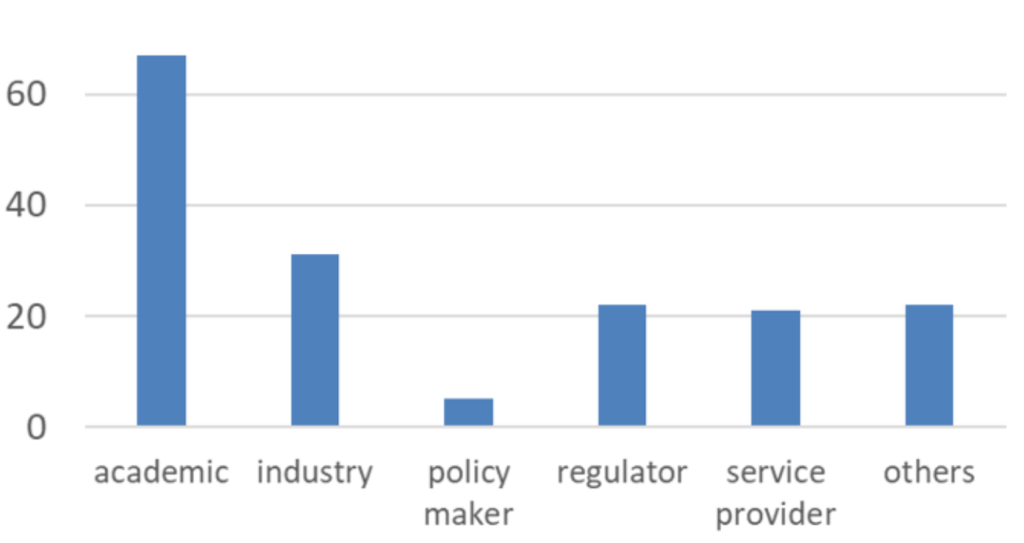The 1st MACRAMÉ online workshop on ‘Harmonisation & Standardisation of Test Methods for Nanomaterials and Advanced Materials’, jointly organised with the iCARE and nanoPASS Projects, as well as the MaltaInitiative took place on the 22. – 23. November 2023 (online).
The workshop welcomed over 150 registrants, evenly distributed amongst academia, industry, policy makers, regulators and service providers (see Figure to the right).

Key messages and quotes from the round table of the first day:
“It has been instrumental to have all these projects developing data. There is a before and an after Malta Initiative…”
“A lot of funds go in research and development but not so much into validation.”
“The definition of NAMs – New Approach Methodologies – is unclear.”
“Apart from the validation of the methods in terms of maturity and reproducibility the scope and relevance (applicability domain) of the methods need to be determined.”
“Apart from the validation of the methods in terms of maturity and reproducibility the scope and relevance (applicability domain) of the methods need to be determined.”
“Dedicated calls for harmonisation efforts as well as for validation studies seem to be a good trigger to support this. A further incentive could be changes in regulation (see animal free testing for cosmetics).”
“We lack nanomaterial references with known properties.”
“We deal with an uncertainty to the power of two.”
“The problem in research is to do something new, unknown etc. otherwise we cannot publish.”
“Dedicated calls for harmonisation seems to be a good important trigger, harmonisation is R&D work even if not often seen as such.”
“Exchange between regulators and developers of test methods is needed from early on and continuously. Developers need to learn how methods are used for regulatory purposes and regulators need training on NAMs.”
“We often experience that the developers do not know how to use the test methods for regulatory purposes.”
“One-test-one-endpoint approach is not the aim. NAMs need to be included in testing strategies (e.g. tiered approaches) and can support grouping/read across of NMs.”
“Clear Guidance on the applicability of the NAMs is needed.”
“Guidance is needed on when to use which NAM […].”
“The more NAMs we develop the [fewer] we use.”
“We need defined approaches. But we also need to work on the complexity of methods, combine methods together to give a meaningful answer.”
Key messages and quotes from the round table of the second day:
“Graphene related two dimensional materials (GR2M) is the term to go with.”
“Further development of protocols and standards to characterise graphene related two dimensional materials (GR2M) is needed.”
“In the field of quality control more standards considering in-line techniques need to be developed.”
“We need to distinguish between standards for quality control and safety assessment/ regulation. The safety of GR2M needs to be considered. Therefore, we need exchange with manufactures and regulators.”
“There is a need to distinguish the standards from quality control and those from regulation.”
“We need to clarify what are important characteristics determining potential hazard of GR2M.”
“We need projects specifically on the validation that pick up the methods that are already developed.”
“The field of GR2M is dominated by SMEs. They need support in fulfilling regulatory requirements and safety assessment.”
“The graphene market is dominated by SMEs, we do not have money to run toxicological tests, hence any support on this would be helpful.”
“The same hurdles we had a few years ahead for nanomaterials and now apply for graphene. Look over the EU plate and work with other communities.”
The webinar announcement and agenda are provided here; the full recording of the webinar can be re-watched below.






